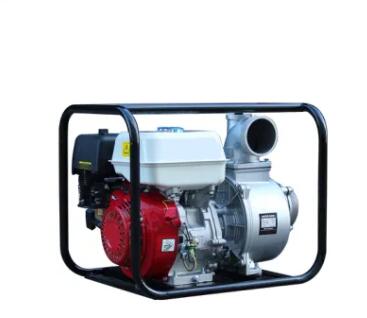The Heart of Mobility: Understanding Gasoline Gas Pumps
2023-10-20
Gasoline gas pumps, often simply called "gas pumps" or "fuel pumps," are an integral part of our daily lives, providing the lifeblood for our vehicles and many power-driven machines. These ubiquitous fixtures at gas stations play a crucial role in our modern world, but how much do we truly know about them? Let's delve into the world of gasoline gas pumps and explore their significance.
The Basics of Gasoline Gas Pumps:
The Origin: The first gasoline pump was invented in the late 19th century. It was a simple device, but it paved the way for the complex and efficient systems we see today.
The Fueling Process: Gasoline gas pumps are designed to safely and accurately transfer fuel from the storage tanks at the gas station to the fuel tank of a vehicle. This process involves a combination of mechanical, electrical, and software components.
Fuel Types: Gasoline pumps dispense various fuel types, such as regular unleaded, premium, diesel, and, in some cases, alternative fuels like E85 (a blend of 85% ethanol and 15% gasoline) or compressed natural gas (CNG).
Components of a Gasoline Gas Pump:
1. Nozzle: The nozzle is the part inserted into the vehicle's fuel tank. It often has safety features like an automatic shut-off to prevent spills.
2. Hose: The hose connects the nozzle to the pump. It is designed to handle the transfer of flammable liquids safely.
3. Dispenser Unit: This is the part you see and interact with. It includes the display screen, buttons for selecting fuel type, and the card reader for payment.
4. Pump and Metering System: The pump and metering system ensures that the correct amount of fuel is dispensed and accurately measures the volume of fuel transferred.
5. Storage Tanks: Gasoline gas pumps are connected to underground storage tanks, which house the fuel until it's ready for dispensing.
Modern Features and Technology:
Payment Options: Gas pumps have evolved to accept various payment methods, including credit and debit cards, mobile payment apps, and loyalty programs.
Environmental Controls: To minimize the release of harmful fumes and reduce the risk of fuel spills, modern gas pumps often include vapor recovery systems.
Data Connectivity: Many gas stations are now connected to the internet, allowing for real-time monitoring of fuel levels, sales data, and equipment maintenance needs.
Alternative Fuels: Some gas stations are equipped with additional pumps for alternative fuels, catering to electric vehicle charging, hydrogen, or biofuels.
Safety and Regulations:
Gasoline gas pumps are subject to strict safety and environmental regulations. These regulations are in place to ensure the safety of the public, the protection of the environment, and the accurate measurement of fuel dispensed.
The Future of Fueling:
As the automotive industry evolves, the role of gasoline gas pumps may change. The rise of electric vehicles and alternative fuels is challenging the traditional gasoline infrastructure. However, gas pumps are adapting, with many gas stations offering a mix of traditional fuels and alternative options.
In a world constantly striving for cleaner and more efficient transportation, the humble gasoline gas pump remains a symbol of mobility and progress, embodying both the challenges and opportunities of the future. Whether you're filling up your tank with traditional gasoline or charging your electric vehicle, the gas pump is a vital part of our modern journey.



